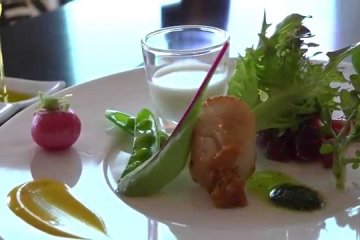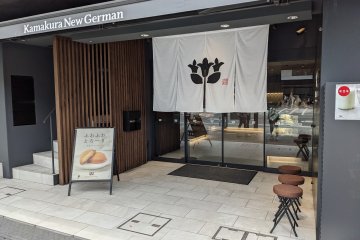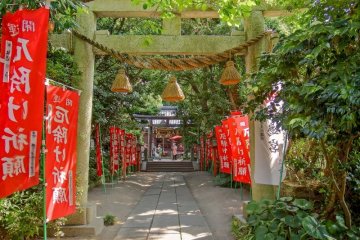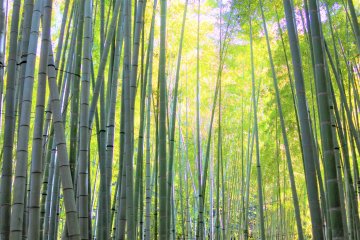
Lunch at The Scapes, Hayama
Tomoko KamishimaLunch at The Scapes, Hayama: Enjoy really delicious vegetables, a nice tender steak and tasty deserts, a sophisticated atmosphere and stunning seashore view.

Feel at home at this relaxing seaside lounge space that sits along Hayama's famed coastline. UNDER THE PALMO offers a calm, minimal interior—made from local materials by local artisans—that houses a cafe as well as event space for exhibitions, pop-up shops, exercise classes and movie screenings. Sit back and enjoy the cafe menu of drinks, alcohol and food offerings (both desserts and dishes to share). Gaze out at the views of Sagami Bay from the wooden deck terrace, with Enoshima—and even Mount Fuji. UNDER THE PALMO follows in the footsteps of the much-loved CABaN HAYAMA beach terrace, originally located nearby.
From Zushi Station, take a bus and alight at Morito Coast (~15 min ride). It's a 5 minute walk from the bus stop.

Lunch at The Scapes, Hayama: Enjoy really delicious vegetables, a nice tender steak and tasty deserts, a sophisticated atmosphere and stunning seashore view.

If you come to the Hayama Hotel Otowa no Mori, the best way to spend your time might be to do nothing—just relax. Here you will find the atmosphere of a real resort!

Hayama Funny House offers guests a relaxing escape along Kanagawa's Hayama coast, overlooking the Sagami Bay.

Taste Aratama's famous fried pork cutlet and fall in love with the fresh flavors. Tonkatsu isn't all that's on the menu. Be sure to try Aratama's other dishes like mozzarella menchi katsu and cream croquette.

Discover the taste that Kamakura locals are in love with. New German's fluffy custard-filled sponge cakes are a dessert that is sure to impress. The caramel custard flavor is especially popular with visitors.

At the creative French restaurant, Nature et Sens, diners are treated to an experience for the senses. Seasonal ingredients and Kamakura produce take centerstage in these fantastically beautiful dishes. Enjoy a glass of wine with your meal from their wide selection for the ultimate experience.

Yakumo Shrine, also called Yakumo Jinja, was established around 1082 by Yoshimitsu Minamoto—a Minamoto clan samurai during the Heian Period—and is believed to be the oldest talismanic shrine in Kamakura. It is located in the Omachi neighborhood and is said to ward off bad luck. Yoshimitsu Minamoto founded the shrine to help protect the people of Kamakura against the many epidemics that had taken hold of the area. The shrine represented a branch of Gion Shrine (modern day Yasaka Shrine) in Kyoto, which was known for its protection against illnesses. When the severity of Kamakura’s epidemics lessened in 1084, the shrine became a popular spot to repel bad luck. Today, the shrine is a small, quiet, and off-the-beaten-path spot to pray for good luck. Enjoy the peaceful grounds and be sure to collect a red Goshuin stamp at the shrine’s office to commemorate your visit.

Myohonji, located in the heart of Kamakura, is one of the oldest Nichiren-sect temples of Japanese Buddhism. Despite its city location, the temple is renowned for its tranquil atmosphere and lush encircling nature. It also tends to be less touristy than other temples in the area. Myohonji was founded in 1260 by Hiki Yoshimoto after he encountered the Buddhist priest and philosopher Nichiren Shonin in Kamakura. The site of the temple was previously home to the Hiki clan, before they were defeated by the Hojo clan in the early 1200s. Hiki Yoshikazu donated his home to Nichiren Shonin for the souls of his fallen clan, which later grew to be Myohonji. Some notable structures include Soshido, Myohonji’s largest temple building, Nitenmon gate, a beautiful inner gate, and a bronze statue of Nichiren. Enjoy the temple grounds in all seasons with spring cherry blossoms, verdant summer foliage, fiery autumn maple and ginkgo leaves, and winter plum blossoms.

Hōkoku-ji is an old temple in the Kenchō-ji school of the Rinzai sect of Zen Buddhism located in Kamakura, Japan. Famous for its bamboo garden, it is also known as "Bamboo Temple". A statue of Gautama Buddha, called Shaka Nyorai in Japanese, in a sacred hall is the temple's principal image. [Wikipedia]